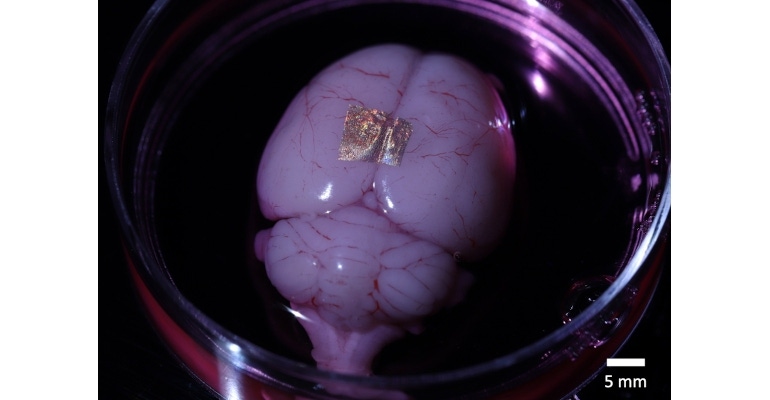Tattooing Gold on Live Cells for Smart Device Integration
Researchers have developed a method for attaching flexible arrays of nanotechnology directly onto cells for potential future diagnostic and treatment technology.
September 18, 2023

A new technique that can "tattoo" living cells and tissues with flexible arrays of gold nanodots and nanowires is paving the way for the integration of smart devices directly into human tissue, a cyborg-like scenario that until now has only been the stuff of science fiction. Researchers at Johns Hopkins University developed the technology, which allows for the placement of optical elements or electronics on live cells using tattoo-like arrays, they said. The "electronic tattoos" stick on cells in a flexible way that conforms to their wet and fluid exterior structure.
The solution could one day be used for remote monitoring and controlling of individual cells within the human body, a futuristic biomedical scenario that can preemptively identify and treat medical conditions, said David Gracias, a professor of chemical and biomolecular engineering at Johns Hopkins University who led the researchers.
"If we had technologies to track the health of isolated cells, we could maybe diagnose and treat diseases much earlier and not wait until the entire organ is damaged," he said in a post on the Hub.
Single-Cell Technology for Electronic Tattoos
The technology advances previous work that used hydrogels to stick nanotechnology onto human skin and internal animal organs. Now that researchers have demonstrated how to adhere nanowires and nanodots onto single cells, scientists have a pathway to developing optical sensors and electronics compatible with biological matter at the cellular level, they said.
"We're talking about putting something like an electronic tattoo on a living object tens of times smaller than the head of a pin," Gracias said. "It's the first step toward attaching sensors and electronics on live cells."
For the work, Gracias and his colleagues set out to develop a nontoxic, high-resolution, lithographic method to attach nanomaterials to living tissue and cells. They used gold—a material that is known for preventing signal loss or distortion—to build the tattoo arrays, attaching them to cells called fibroblasts that make and sustain tissue in the human body.
Development and Application
Specifically, the team used nanoimprint lithography to print a pattern of nanoscale gold lines or dots on a polymer-coated silicon wafer. They then dissolved the polymer to liberate the gold nanoarray so it could be transferred to a thin piece of glass.
Next, the researchers functionalized the gold with cysteamine and covered it with a hydrogel layer, which, when peeled away, removed the array from the glass. The patterned side of the flexible array was coated with gelatin and attached to individual live fibroblast cells using an alginate hydrogel film, a gel-like laminate that can be dissolved after the adherence of the gold to the cell.
In the final step, the team degraded the hydrogel to expose the gold pattern on the surface of the cells. The researchers used similar techniques to apply gold nanoarrays to sheets of fibroblasts or to rat brains. Experiments showed that the arrays were biocompatible and could guide cell orientation and migration, they said. Further the structures were able to stick to soft cells for 16 hours even as the cells moved.
The researchers published a paper on their work in the journal, Nano Letters. Their approach, which is cost-effective, also can be used to attach other nanoscale components, such as electrodes, antennas and circuits, to hydrogels or living organisms, they said.
In future research, the team aims to attach onto cells more complex nanocircuits that can stay in place for longer periods of time. The researchers also want to experiment with different types of cells, they said.
About the Author(s)
You May Also Like

.png?width=300&auto=webp&quality=80&disable=upscale)
